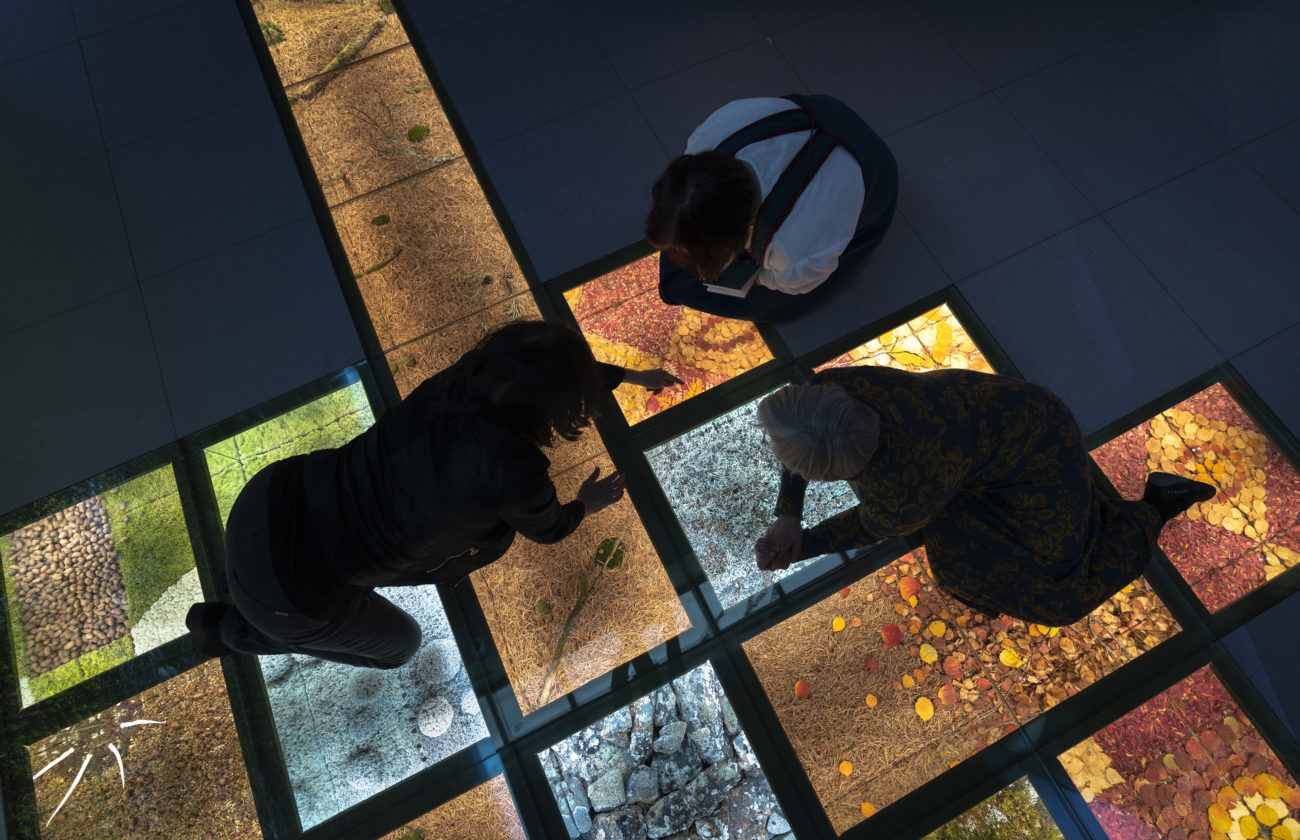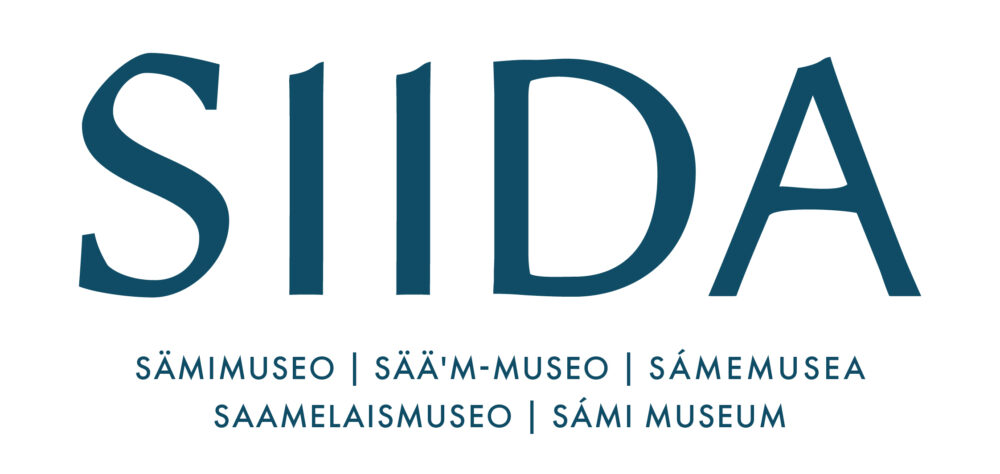
Artists’ contribution to the content of Siida’s exhibition represents a completely new narrative approach to our permanent exhibition. The presence of the past in our time is the starting-point for introducing Sámi culture to visitors. Therefore, we have interwoven the skills of today’s Sámi artists and craft makers – duojárs – with our message on cultural history and traditional knowledge. Similarly, the exhibition’s section on nature displays the expressiveness of nature art.
Outi Pieski is the artistic director of Sámi Museum’s exhibition. She has also provided special artworks that support the exhibition’s main themes. Her work The Land Flows in Colours arches over the main exhibition hall, creating a line of fell silhouettes coloured by shawl fringes like those used in traditional Sámi clothing. In the work, our foremothers’ colours form a protective arch over the hall’s meeting place.
The warm video installation Through the Ages, created by Marja Helander and Mauri Lähdesmäki and situated in the centre of the main hall, spotlights the vivacity and diversity of Sámi culture. Traditional clothing – the main theme of this work – is presented as a living part of culture through the people who wear the clothes.
Jouni S. Laiti’s works The Raked Forest of the North and Rástegáisá: The Protector of Reindeer Mothers takes a stand on social discussions and issues of land use in the Land of the Sámi. The exhibition also displays artistic features through presentation, as in the showcase of shoelaces created by Elle Valkeapää and the graphic look created by Lada Suomenrinne and Essi Ranttila. The word- and soundscapes of the permanent exhibition were designed by Pekka Aikio together with Wimme, Ingá-Maret Gaup-Juuso and Niillas Holmberg.
The music video featuring a Sámi tent called Steehlaž kååvas – Lássalávvu – Lasâláávu (Glass Lávvu) reflects the feelings of past generations. The Sámi musicians performing in the video are Heidi Gauriloff, Hilda Länsman, Mikkal Morottaja (Amoc) and Ailu Valle. The video was filmed and directed by Ville-Riiko Fofonoff, with the musicians acting as co-directors.
The work on the project What Form(s) Can Atonement Take, which was directed by Pauliina Feodoroff, deals with how to use traditional knowledge to repair environmental damage caused by the dominant culture and how to combine Sámi customary law and the planning of land use. The project presents a new way of creating participatory co-operation between the authorities, researchers and Sámi.
In the nature part of the exhibition, Anni Rapinoja’s Ruijanpolku Trail features art made from natural materials. It is sunk into the floor so that visitors can walk on the glass floor and examine the vegetation contained in the artwork.
Kaija Kiuru’s work Hide-and-Seek, which is situated in an old-growth forest, represents the essence of the forest. The work is made from a lumpy pine tree, gnarls of birch and pine, and stuffed birds. All the materials are recycled natural materials. The birds were taken from Siida’s earlier permanent exhibition.
The Nest of the Winds – Kiuru’s companion piece to Hide-and-Seek – can be seen in Metsähallitus’s Customer Service area in the lobby of Siida. It is made from natural materials such as roots and branches of pine trees. The stem is made from a deadwood pine that was part of Siida’s first exhibition.
The background photo of the showcase on climate history is a digital painting by Tom Björklund depicting the mammoth steppe. The large photographs in the outer circle of the main exhibition hall were taken by Pasi Nivasalo, Martti Rikkonen and Pertti Turunen.
Siida’s exhibition also includes cultural video productions created by Ville-Riiko Fofonoff, Kevin Francett and Aslak Paltto. The exhibition’s video productions focusing on nature were created by Riku Karjalainen, Rayann Elzein and Jorma Hevonkoski.
